
 |
|
|
Vegetables
Volume 57 Number 7 Date 05/24/2012 CABBAGE LOOPER - Mid-stage larvae from the early May migration have been observed in cabbage transplants in southern Wisconsin. Although numbers are currently insignificant, their presence indicates the potential for larger populations later this season. The subsequent generation of larvae appearing next month could cause considerable damage unless controlled. SQUASH VINE BORER - Squash, pumpkin and zucchini growers are advised to closely inspect susceptible plants over the next 3-4 weeks for the flat, brown eggs deposited at the base of stems. Larvae bore into the stems of crops upon hatch, necessitating early monitoring and control as soon as the eggs are noticed. Damage is more likely to occur in gardens and commercial plantings previously infested by this pest. Growers should promptly pull and destroy wilted plants. CORN EARWORM - Low numbers of moths have been registered in pheromone traps since mid-May, signaling a very light migration is occurring. The May 22 report from insectforecast.com states that the active weather pattern predicted for the next several days will be conducive for migration into extreme southwest Wisconsin, where a corridor of strong southerly winds may result in higher moth numbers moving north from southern source regions. SPOTTED CUCUMBER BEETLE - These insects, also known as "southern corn rootworm beetles", have been noted in many alfalfa fields in the past several weeks. Spotted cucumber beetles are of primary concern to cucumber and melon growers due to their capacity to transmit bacterial wilt. A count of 4-5 beetles per 50 plants indicates the potential for disease transmission. VARIEGATED CUTWORM - Based upon the extraordinary numbers of eggs appearing on homes and in vegetation in the northern half of the state, damage to hostas, potatoes, tomatoes and many other fruits, ornamentals and vegetables is very probable next month. Nocturnal feeding by these "climbing" worms results in large, irregular holes at the leaf margins or oblong holes within the leaf bounded by veins. The larvae also devour buds and fruits, in addition to foliage. YELLOWSTRIPED ARMYWORM - Moths are appearing in southern Wisconsin black light traps. The Arlington, Coon Valley and Mazomanie locations reported low counts of 3-10 moths in the past two weeks. This foliage-feeding caterpillar is sporadically injurious to beans, broccoli, cauliflower, cucumbers, lettuces, peppers, tomatoes and young stands of field crops. Most of its injury consists of defoliating small plants. Since these armyworms are difficult to control with insecticides, early detection is important for maintaining populations below economic injury levels. -- Clarissa Hammond, DATCP Pest Survey 
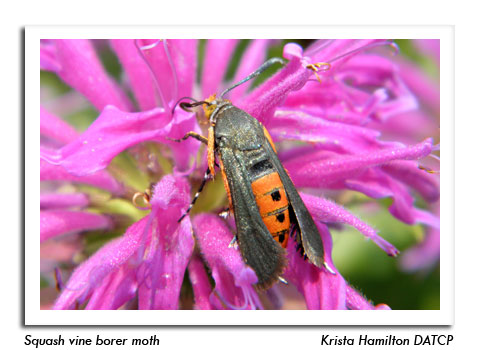
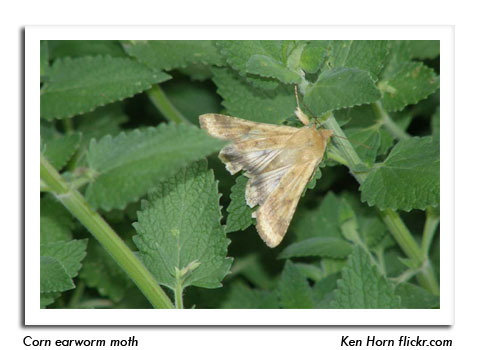
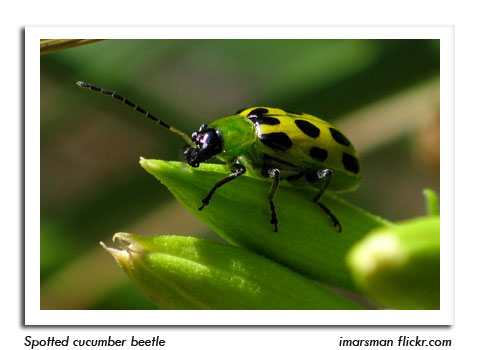
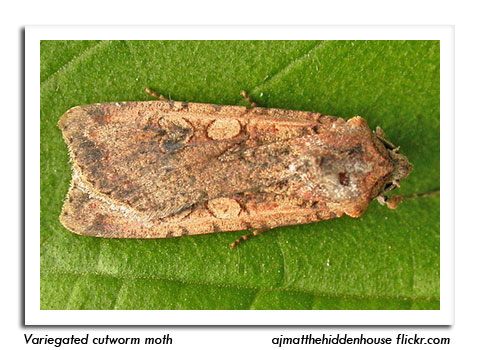
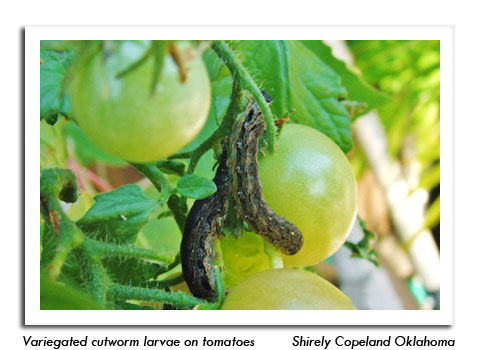
|
|
|